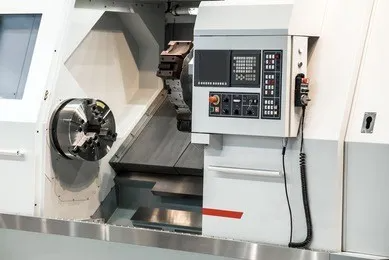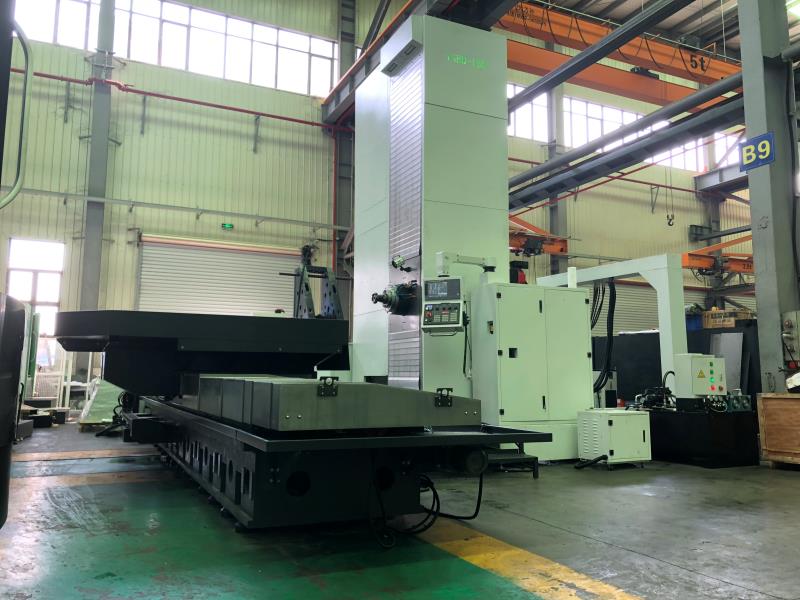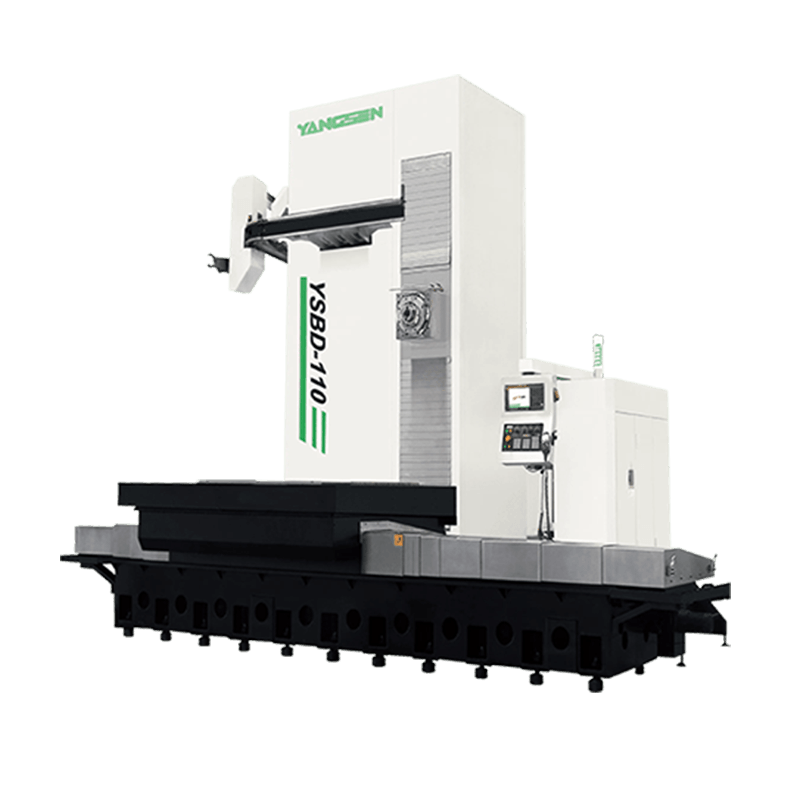Explore the key differences between horizontal and vertical boring machines, including their design, applications, capabilities, and more, to help you make an informed decision for your machining needs.
Horizontal and vertical boring machines are distinguished by their orientation and workpiece positioning. Horizontal boring machines have a horizontal spindle, while vertical boring machines have a vertical spindle.
The choice between the two depends on the size, weight, and shape of the workpiece, as well as the desired machining capabilities and applications.
I think machine design is one of the primary differences we mainly talk about when it comes to highlighting the distinction between machines like horizontal and vertical boring machines.
So, let’s start with it; make sure to stay with me throughout the whole article. I will also share some real-life case studies that will help you better understand the differences.
Horizontal boring machines feature a horizontally-oriented spindle that moves along the X, Y, and Z axes. The workpiece is held stationary on a table, and the spindle can move in multiple directions to bore holes, mill surfaces, or create slots.

Vertical boring machines, also known as vertical turret lathes, have a vertically-oriented spindle. The workpiece is mounted on a rotating table, while the spindle and its cutting tool remain stationary. Vertical boring machines can perform turning, facing, and threading operations on large, heavy workpieces.
I personally think that applications are one of the deciding factors to better understand the difference.
Now, I’m going to explain a few applications to you so that you can better understand the difference between CNC horizontal boring machine and a vertical boring machine.
Horizontal boring machines are ideal for large workpieces that require complex machining operations. They are commonly used in industries like aerospace, automotive, and heavy machinery for tasks such as milling, drilling, and tapping.
Vertical boring machines are suitable for heavy, large-diameter workpieces that require turning, facing, and threading operations. They are commonly used in industries like shipbuilding, power generation, and heavy equipment manufacturing.
Workpiece size and weight play a significant role in explaining the differences between horizontal and vertical CNC boring machines because these factors impact the machine's design, capabilities, and overall suitability for specific applications.
For this reason, I have added this factor. Let me explain briefly how both of these machines differ in terms of size and weight.
Horizontal boring machines can handle workpieces of varying sizes and weights. Their large tables and multiple axes of movement allow them to accommodate long, heavy workpieces.
Vertical boring machines are designed for large, heavy workpieces that are difficult to handle on CNC horizontal boring mills. Their rotating tables can support substantial weights, making them ideal for machining large cylindrical components.
As a user, I want to ensure that the machine I select is capable of handling the specific tasks and applications required in my industry or project.
By considering the machining capabilities of each machine, I can make an informed decision that aligns with my needs, helping me achieve the desired results while optimizing productivity and efficiency.
Horizontal boring machines offer versatile machining capabilities due to their multiple axes of movement. They can perform a wide range of operations, including drilling, milling, tapping, and boring.
So, whenever you look for a horizontal boring machine for sale, consider its capabilities as well.

Vertical boring machines specialize in turning, facing, and threading operations. They are limited in their range of motion compared to horizontal machines, but excel at handling large, heavy workpieces.
Understanding the differences in setup and operation can help me choose the right machine for my specific requirements, factoring in factors such as operator skill level, production timeline, and project complexity.
Horizontal boring machines require a more complex setup and operation due to their multiple axes of movement. Operators must be skilled in aligning the workpiece, selecting the proper tooling, and programming the machine for the desired operation.
Vertical boring machines have a simpler setup and operation process, as the workpiece is mounted on a rotating table, and the spindle remains stationary. Operators need to be proficient in setting up the workpiece and selecting the appropriate tooling for the required operations.
Without productivity and efficiency, we can’t really decide which machine is better. So, below I have briefly explained how these two machines offer different productivity.
Horizontal boring machines offer high productivity and efficiency due to their versatility and range of motion. They can perform multiple operations without the need for repositioning the workpiece, reducing setup time and increasing throughput.
Vertical boring machines are efficient for their specific applications, as they can handle large, heavy workpieces with ease. However, their limited range of motion and specialization in turning operations make them less versatile than horizontal machines.
When comparing horizontal and vertical boring machines, it's important to consider not only the initial purchase cost but also ongoing expenses such as maintenance, tooling, and operating costs.
Moreover, you should factor in the potential for increased productivity and efficiency offered by each machine type, as these benefits can contribute to a quicker ROI and more profitable operations over time.
Horizontal boring machines tend to be more expensive than vertical machines due to their complexity and versatility.
However, their ability to perform multiple operations can lead to cost savings in the long run by reducing the need for multiple machines and streamlining the production process.
Vertical boring machines are generally more affordable than horizontal machines, but their specialized nature may require additional machines for other operations.
Investing in a vertical CNC boring machine makes sense if the majority of your machining needs involve turning, facing, or threading large, heavy workpieces.
I think when we talk about horizontal and vertical boring machines, technology and automation advancements can include features such as computer numerical control (CNC) systems, adaptive control, tool probing and measurement systems, high-speed machining, and live tooling capabilities.
These advancements can enhance the precision, speed, and versatility of the machines, enabling you to tackle more complex and demanding tasks with greater ease and efficiency.
Horizontal boring machines can be equipped with advanced technology and automation features, such as computer numerical control (CNC) systems and automatic tool changers, to improve productivity and reduce operator intervention.
Vertical boring machines also benefit from technological advancements, with CNC systems and automatic tool changers being common in modern machines. These features enhance productivity and ensure consistent, high-quality results.
Flexibility and customization are something that everyone wants to prefers in a machine. I personally think that what’s the point of having a CNC machine if you can’t customize it?
So, make sure whenever you are deciding between the two options, consider this factor.
The versatility of horizontal boring machines allows for greater flexibility and customization in machining operations.
They can be easily adapted to accommodate different workpieces and tooling, making them an excellent choice for manufacturers that require a wide range of capabilities.

Vertical boring machines are more specialized, focusing on turning operations for large, heavy workpieces.
While they may not offer the same level of flexibility as horizontal machines, they can be customized with attachments and tooling to expand their capabilities within their specific domain.
I have seen a lot of advanced technologies when it comes to boring machines. Technology is changing very fast, and it has made me consider factors such as high-speed machining, multi-axis capabilities, CNC systems, advanced tooling and work-holding solutions, and automation features.
Let’s take a brief look at how technology has advanced for each of these machines.
Adaptive control technology allows horizontal boring machines to optimize cutting conditions in real time, adjusting factors such as spindle speed, feed rate, and cutting depth based on sensor feedback. This can result in improved productivity, reduced tool wear, and higher-quality finishes.
Tool probing and measurement systems can be integrated into horizontal boring machines to ensure accurate tool positioning and precise cutting operations.
These systems use touch probes or laser-based sensors to measure tool dimensions and compensate for any tool wear or deviation, ensuring consistent results.
Modern vertical boring machines can incorporate high-speed machining technologies, enabling faster cutting speeds and reduced cycle times.
High-speed machining can improve productivity and reduce heat generation during cutting, leading to better workpiece quality and longer tool life.
Some vertical boring machines can be equipped with live tooling, which allows them to perform additional operations such as milling, drilling, and tapping.
This can expand the capabilities of vertical machines, making them more versatile and reducing the need for secondary operations or additional machines.
I know you might have jumped to the Pros and Cons section, and don’t worry. I have highlighted some major pros and cons in this section. It will help you better understand what we discussed in this article.
• Versatile with multiple axes of movement.
• Capable of performing a wide range of operations.
• Suitable for large, heavy workpieces.
• Better surface finish.
• Suitable for long workpieces.
• Better chip evacuation.
• Enhanced accuracy.
• Adaptable tooling options.
• More expensive initial investment.
• Complex setup and operation.
• Ideal for large, heavy workpieces with large diameters.
• Specializes in turning, facing, and threading operations.
• Generally more affordable than horizontal machines.
• Efficient for large-diameter turning tasks.
• Lower skill requirement for operators.
• Lower initial investment.
• Compact footprint.
• Easier maintenance.
• Limited range of motion and operation capabilities.
• It may require additional machines for other operations.
To help you better understand the differences between horizontal and vertical boring machines, I have highlighted some real-life case studies for each machine. Have a look at these case studies and see if any of them can relate to your situation.
A construction company responsible for building a large-scale bridge project chose to use a horizontal CNC boring machine to create the necessary holes for the bridge's support structures.
The machine's ability to handle large, heavy workpieces and perform precise, accurate boring operations made it the ideal choice for the project. The use of a horizontal boring machine resulted in faster construction times and reduced the overall cost of the project.
A wind turbine manufacturer used a vertical boring machine to machine large components, such as the main bearing housings and gearbox housings.
The vertical machine's ability to handle heavy, large-diameter workpieces and perform specialized turning operations made it a perfect fit for its production process.
The company was able to streamline its manufacturing process and increase the overall efficiency of its operations.
A mold and die manufacturer needed a versatile and precise machine to create complex components for various industries, including automotive, aerospace, and consumer goods.
They chose a horizontal boring machine for its ability to handle a wide range of materials and operations while maintaining high levels of accuracy and precision.
The use of a horizontal boring machine allowed the company to expand its capabilities and meet the demands of its diverse customer base.
A company specializing in the production of large-diameter pipes used for oil and gas transportation relied on a vertical boring machine to perform turning and facing operations on the pipe ends.
The vertical machine's ability to handle large, heavy workpieces and provide consistent, high-quality results made it an essential part of their manufacturing process.
The company was able to increase its production capacity and meet the growing demand for large-scale pipes in the energy sector.
The main difference between horizontal and vertical boring machines lies in their primary applications, workpiece size and weight handling, machining capability, setup and operation, cost and investment, technology and automation, flexibility, and customization.
I have mentioned most of the differences, but yes, by understanding these differences and considering the specific requirements of each project, you can make informed decisions that optimize performance and productivity.
1. Which boring machine is better for heavy-duty machining?
If your workpieces are extremely large in diameter and heavy, a vertical boring machine is usually more suitable because the table rotates and the workpiece is supported by gravity. For long and deep hole operations, a horizontal boring machine is more effective.
2. Does a vertical boring machine replace a horizontal boring machine?
Not exactly. Vertical machines are mainly used for facing, turning, and threading processes. Horizontal machines can handle drilling, milling, boring, and multiple complex operations. Many factories use both depending on their projects.
3. Which machine offers better accuracy?
Horizontal boring machines generally have higher positioning accuracy and more precise control on multi-axis movement. However, modern CNC VTLs with high rigidity also offer excellent precision for large diameter parts.
4. Which machine has a lower investment cost?
Vertical boring machines typically have a lower initial cost and a lower operating cost. Horizontal boring machines are more expensive, but they offer greater flexibility and higher machining capabilities.
5. How do I decide which machine to invest in?
It depends on part geometry, production volume, and your machining goals. If your main workpieces are large rings, turbine components, gear housings, or large diameter flanges, choose a vertical type. If you need more processing capability and multi-operation flexibility, choose a horizontal type.